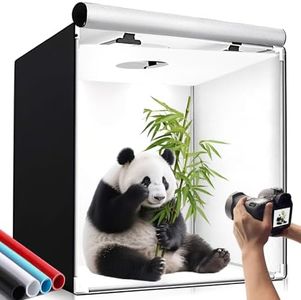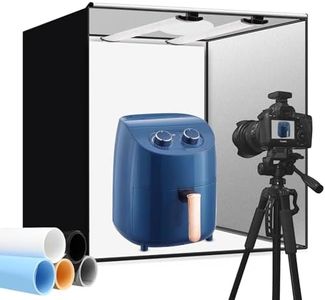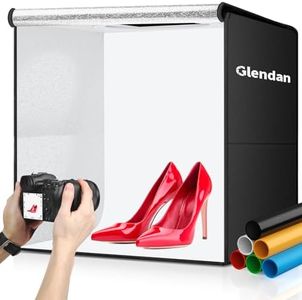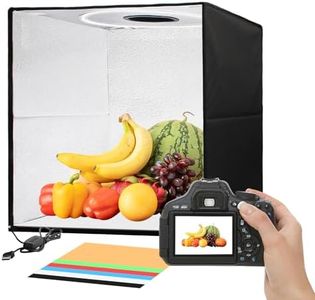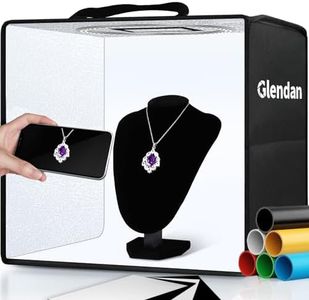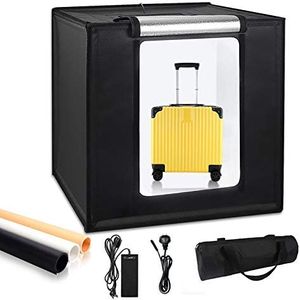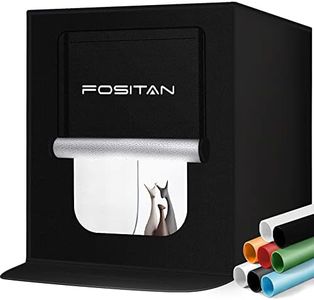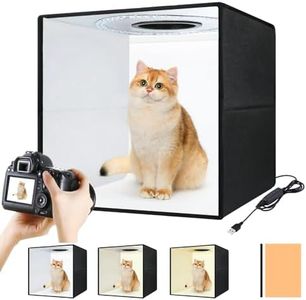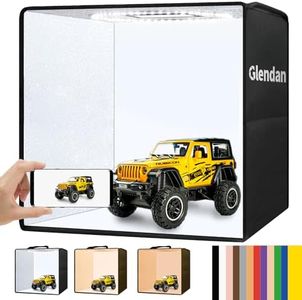We Use CookiesWe use cookies to enhance the security, performance,
functionality and for analytical and promotional activities. By continuing to browse this site you
are agreeing to our privacy policy
10 Best Photo Light Boxes
From leading brands and best sellers available on the web.Buying Guide for the Best Photo Light Boxes
When choosing a photo light box, also known as a light tent, it's important to focus on how it will help you take clear, well-lit photos, especially of smaller objects like products for online shops or crafts. The main goal is to create even lighting that reduces shadows and highlights details. You don’t have to be a professional photographer to use one, but understanding a few key features will help make sure you get a light box that best fits your needs and makes your photos look their best.SizeThe size of the photo light box determines what items you can photograph inside it. Small boxes are good for things like jewelry or small gadgets, while larger ones can fit things like shoes or bags. If you mostly take pictures of small objects, a compact box saves space and is portable. For bigger items, make sure you choose a light box with enough width and height so the item fits comfortably inside with room around it for even light. Always think about the largest item you'll want to photograph, then pick a box a little bigger than that.
Lighting Type and BrightnessMost light boxes come with built-in LED lights. LED lights are bright, energy-efficient, and last a long time. Brightness is measured in lumens—higher lumens mean more light. Some light boxes offer adjustable brightness, which is helpful if you want to soften or brighten the light for different objects or effects. If you need more control or plan to photograph items with shiny surfaces, adjustable lighting lets you avoid too much glare. Choose a box with strong, even lighting if you want to reveal lots of detail in your photos.
Color TemperatureColor temperature refers to how warm (yellowish) or cool (bluish) the light appears, measured in Kelvin (K). Lower numbers (around 3000K) look warmer, while higher numbers (above 5000K) look cooler, like daylight. A neutral or daylight color temperature (about 5000K-6000K) makes product colors look natural and accurate in photos. Look for a light box with a color temperature close to daylight if true color is important for your work. Some advanced boxes let you adjust this to match your style or correct color casts.
Material and PortabilityLight boxes can be made from fabric, plastic, or sturdy panels. Lighter fabric ones are easier to fold and carry, making them a good choice if you need to pack it away or move it between locations. Rigid panels give more shape and often provide more even lighting, but they’re bulkier. Pick a material that fits your workspace and whether you need to set up or pack away often. If you have a permanent spot, a sturdier box is fine; if not, look for something foldable and lightweight.
Backdrop OptionsMost light boxes come with different color backdrops, such as white, black, or other neutral shades. Backdrops help you control the look of your background and make your subject stand out. White is standard for a clean look, but other backdrops can help if you want to keep the background from overpowering your item or reduce reflections. If you’ll photograph many types of products, check that the box comes with various backdrops and that they’re easy to remove, clean, and change.
Openings and Shooting AnglesLight boxes often have different openings or windows that let you shoot from the front, top, or side. More access points let you take photos from various angles without moving the item or disturbing your setup. If you want flexibility or plan to experiment with shooting positions, pick a box with multiple openings. For standard shots, a simple front opening will usually be enough.
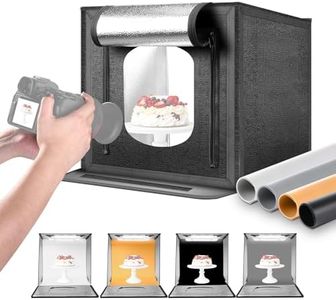
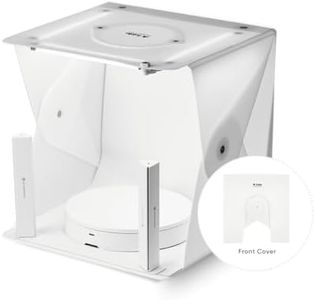
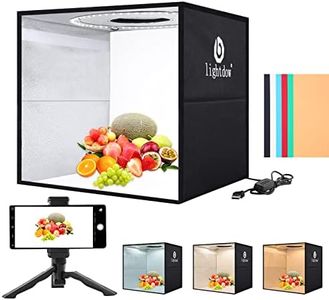
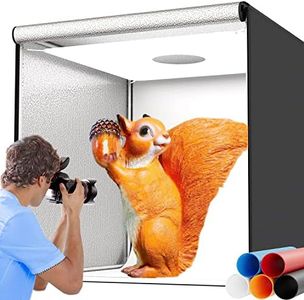
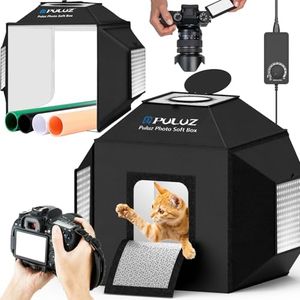
![ORANGEMONKIE [Foldio3] Portable Photo Studio 25 x 25 Photo Shooting Tent Lighting Box](https://images-proxy.bestreviews.guide/Z3Ft4YfVYORb9IoyYqPlpzM4Ypk=/0x300/https://m.media-amazon.com/images/I/31I1CQwfCnL._AC_CX679_.jpg)
